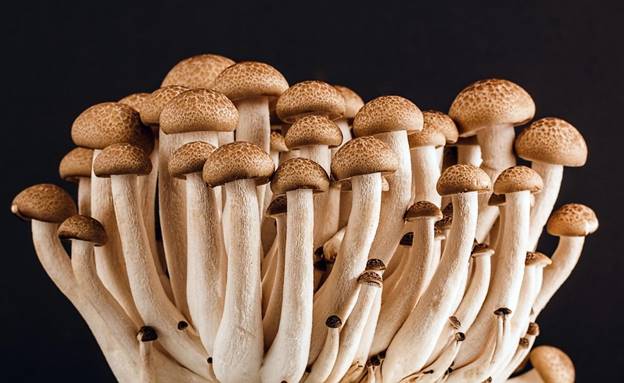Amanita mushrooms can significantly add to your dietary needs and hiking experiences if you’re an avid outdoor enthusiast or a budding beginner. Everyone knows that eating wild-foraged foods has benefits – increased nutrition, better taste, etc.; however, few know the ascetically beautiful nature of foraging for Amanita mushrooms.
Whether it’s their creamy white cap or striking red fly agaric patterning – these fungi carry with them both a nutritional punch and the enormous potential to explore. In this comprehensive guide about Amanita mushrooms tailored for beginners and experts alike, we’ll discuss in detail all the tips and tricks you’ll need to know to safely and reliably identify Amanita in your area.
What are Amanita mushrooms?
Amanita mushrooms, or death cap mushrooms, are the most famous mushroom species within the entire fungus family. This group of poisonous mushrooms has various shapes and colors, each characteristic defined by its specific physical features. Amanitas have a few components that can be used to identify them: a white-ringed stipe where their stem meets their cap, white gills underneath, and an egg-like structure on top.
In addition, although many mushrooms in the Amanitaceae family are pretty striking in their visual appearance and even very edible, members of Amanita tend to feature white or cream-colored shades combined with either lilac, brown, or olive green shades. So it’s important to remember that not all attractive mushrooms are edible! Moreover, if you are interested in buying some Amanita Mushrooms then Psilo Mart is the place to go.
When gathering these mushrooms for consumption, always double-check their identification with an expert, as some species can be fatal if eaten raw.
Though there is beauty in these wild edibles when observed from afar, and these deadly but gorgeous selections share similarities, knowledge about how to recognize them is essential for any amateur mushroom picker!
Where can you find Amanita mushrooms?
Amanita mushrooms are incredibly popular and abundant, making them a great choice if you want to forage for mushrooms. They can be found in many places worldwide and will be easy to find once you know where to look.
Generally, they can be found under the shade of trees like pine or oak. You’ll most likely spot them during relatively wet spring days, but note that some Amanitas mushroom species don’t prefer such moist weather.
Amanitas often grow near deciduous forests with tall trees, so these areas usually yield more mushrooms than other habitats. You’ll also want to study the terrain closely and search for dead stumps or decaying roots that could serve as food sources for your hunt.
That said, it’s essential to pay attention whether or not you decide to forage in wooded areas since some species of Amanita mushrooms are highly toxic – even deadly – and need to be avoided at all costs!
How to identify an Amanita mushroom?
Amanita mushrooms are one of the most recognizable species of fungi, characterized by their white to light brownish caps and ringed stalks. Identifying an Amanita mushroom can be tricky, as other species have similar characteristics. But with a few helpful tips and patience, you can tell which type of mushroom you have encountered in no time!
First and foremost, any Amanita you come across will likely have a skirt or ring around its stalk. You will usually find gills on the underside of the cap—but if not, it is still probably an Amanita since some species lack this feature.
Additionally, most Amanitas have bulbous bases with a cup-like structure called a volva at the bottom of their stems. The coloration and pattern on the cap are also typically indicative of which species it may be. However, to be sure you are specifically dealing with an Amanita species, it is best to check out reliable mushroom resources or consult an expert who can provide more comprehensive information.
What are the risks associated with eating Amanita mushrooms?
Eating Amanita mushrooms can be incredibly dangerous, as some Amanita species contain the deadly toxins known as amatoxins. These toxins are the most lethal mushroom-borne and have no known antidote. Eating these mushrooms can lead to nausea, vomiting, liver failure, or death in small doses.
Therefore, it’s important to exercise extra caution when identifying and consuming this type of mushroom. For example, it’s best to avoid lightly colored Amanitas with ringed stems as they are among the most toxic types.
Furthermore, double-checking multiple credible sources is vital since potential lookalikes have similar characteristics, making identification difficult for amateur mycologists. With the proper knowledge and resources, however, you should be able to ensure your safety when out foraging for wild mushrooms- especially with such an essential source as Amanita!
How to prepare Amanita mushrooms for cooking?
Amanita mushrooms are among the most sought-after culinary fungi due to their unique flavor and texture. This makes them a great addition to any kitchen pantry as long as they are adequately prepared! To prepare Amanita mushrooms for cooking, begin by cutting off the base of the stipe with a sharp knife.
Then, peel away the outer part of the scales with your fingers or a spoon. The peeled mushroom should then be brushed with a soft brush or cloth to remove any residue of soil or small insects lurking within it. If the mushrooms have yellow warts on their caps, they should be removed with a knife before preparation.
Once all preparations have been completed, Amanita mushrooms can be cooked in any recipe you desire; however, it is essential to note that different varieties may require different cooking times and temperatures depending upon their level of maturity. In short, prepping Amanita mushrooms for cooking is not complicated but requires time and patience, so go forth and create some delicious possibilities!
Delicious recipes that include Amanita mushrooms:
Foraging for edible mushrooms can be incredibly rewarding, especially regarding Amanitas. There’s something extraordinary about finding these treasures of the woods and turning them into a delicious dish. Amanita mushrooms, also called fairy tales or mushrooms of immortality, add a unique flavor to any meal and can be used in everything from soups and stews to pasta and risotto.
Fortunately, if you’re looking for inspiration, plenty of recipes out there feature Amanita mushrooms as a main ingredient. From breakfast ideas like mushroom omelets to dinner-time classics like beef stew with shiitake mushrooms, there’s something for every taste and occasion.
Allowing you to take full advantage of the natural bounty of your local environment, our comprehensive guide has all the information you need to find and cook Amanita mushrooms like a new pro.
Conclusion:
With their distinct shapes, vibrant colors, and multiple varieties, Amanita mushrooms are often a sight to behold – sometimes even mystical. To study them further is to invite many rewards – after all, they offer myriad health benefits while also providing an array of opportunities for exploration.









